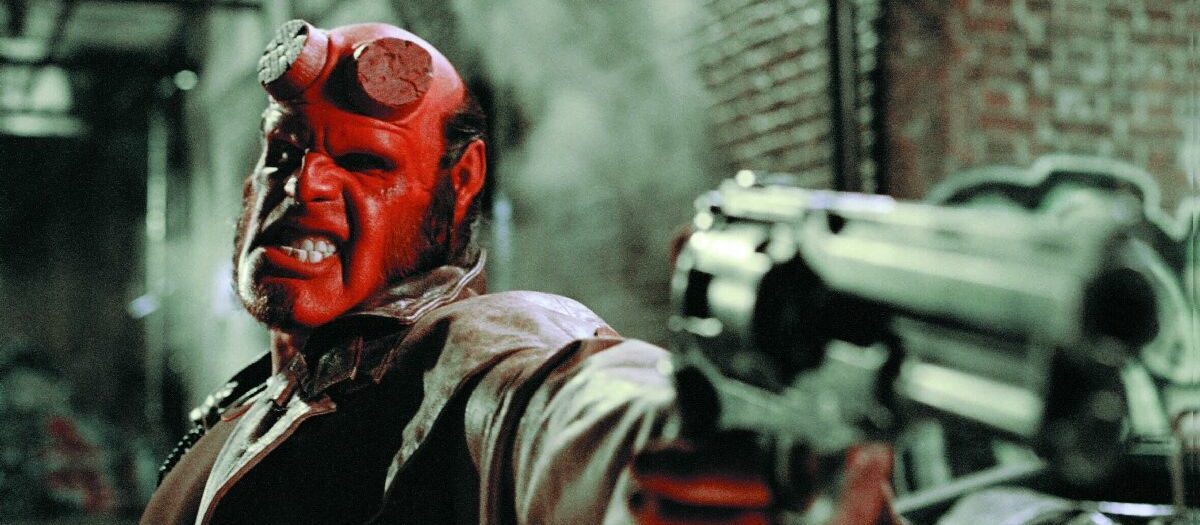
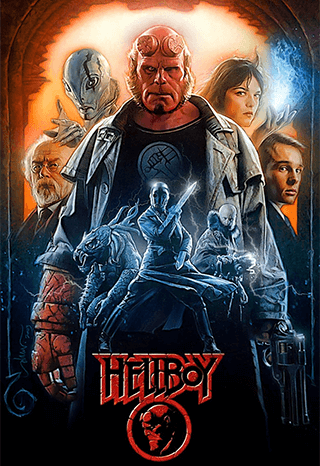
“Remind me why I do this again.”
“Rotten eggs and the safety of mankind.”
Guillermo del Toro’s films always look great, so it’s no surprise that the various inhuman creatures featured in Hellboy are superbly realized. Animatronics, puppeteering, pounds of makeup, colorful slime, it’s a buffet of special effects work made in part as an homage to the legendary work of Ray Harryhausen.
The visual extravaganza moves through its cockamamie story with breakneck pacing, more or less faithfully translating Mike Mignola’s provocative comic book antihero from the page to the screen. In evidence are the campy plotting, visual flair, and jittery energy that make comic books so digestible and engaging. Hellboy is so slick that I’d say it’s one of the few non-Marvel, non-DC superhero films with a sufficient production value to rub shoulders with those tentpole franchises. And with del Toro’s fingerprints all over the place, not to mention the perfect casting of Ron Perlman, it has more personality than just about all of them. It’s let down by some questionable contrivances and trite dialogue, but what superhero film isn’t plagued by those maladies?
The film begins with a prologue set in WWII. A fictionalized version of Russian mystic Grigori Rasputin (Karel Roden) helps the Nazis build a portal to the netherworld from which they plan to release some apocalyptic dragons called the Ogdru Jahad. Led by a young scientist named Bruttenholm (Kevin Trainor), a team of Allied forces descend on the portal and lob a few grenades at it. Two of Rasputin’s disciples, Ilsa von Haupstein (Bridget Hodson) and Kroenen (Ladislav Beran), manage to escape, but Rasputin himself is absorbed into the portal and killed. Just before its destruction the portal had flashed open for a moment, and a search of the premises turns up a bright red baby demon with a right hand of stone (cue Nick Cave’s “Red Right Hand”—an auto-include on the soundtrack). They dub the little critter “Hellboy” and Bruttenholm, AKA Broom, adopts him as his own son.
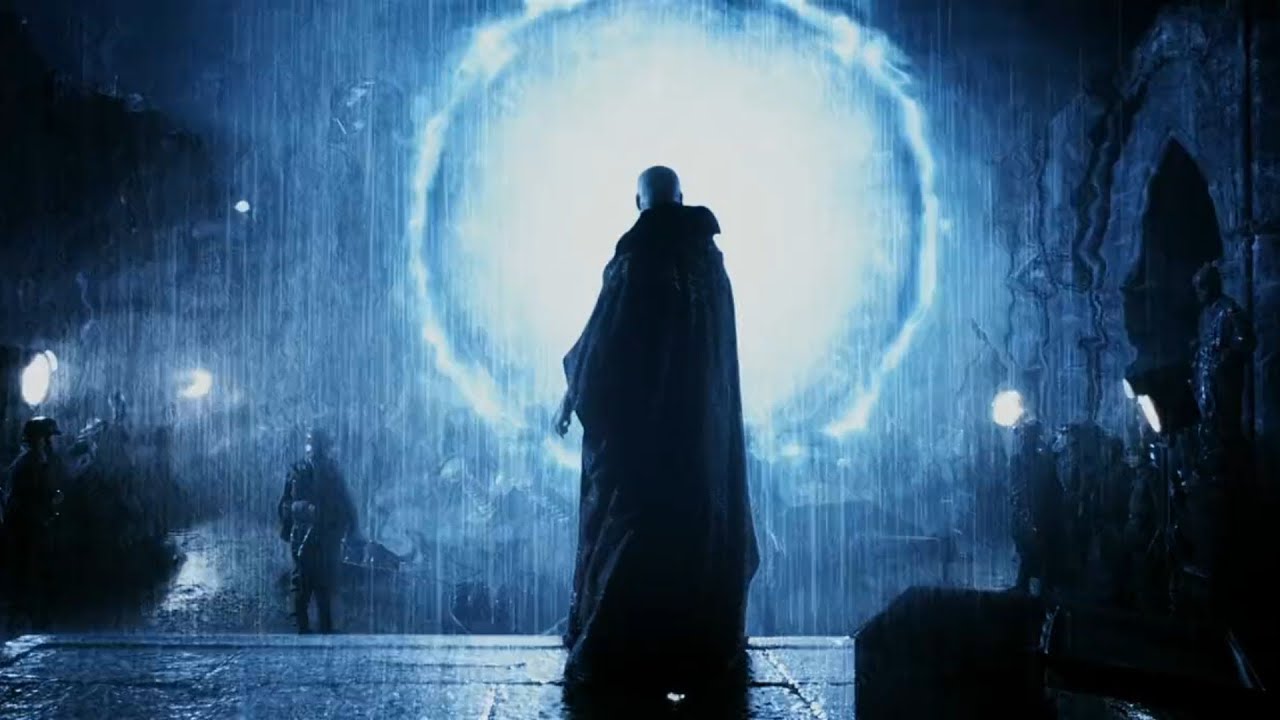
Fast forward sixty years and Hellboy (Perlman) has grown into a fearsome crimefighter keeping extradimensional evil at bay. Joining him in the good monster category are Liz Sherman (Selma Blair), a volatile pyrokinetic; and Abe Sapien (Doug Jones), a telepathic amphibious humanoid who eats rotten eggs and seems as much akin to Jar Jar Binks as to Jones and del Toro’s later manfish creation in The Shape of Water. This trio works for the Bureau of Paranormal Research and Defense under the leadership of the aging professor Broom (now played by John Hurt), covertly cleaning up the streets when demons and other evil creatures stir up chaos. There is a romantic subplot that develops between the excitable Liz, who sparks into flame when she’s excited, and the fireproof Hellboy—a perfect match!
John Myers (Rupert Evans), a well-credentialed FBI agent who seems relatively unremarkable against his fellow crimefighters, is brought in to function as the audience’s eyes and ears and to babysit the moody demon. The existence of Hellboy as a living, breathing entity is playfully revealed to be uncommon knowledge. The public only knows of him from the comic book depictions and Myers cannot help but stare when he first meets the 7 foot tall freak who eats cats for breakfast. Perlman is a pure delight as Hellboy, gleefully chomping his cigar, punching out alien creatures, and flinging sarcastic non sequiturs from under literal pounds of makeup. There’s a camaraderie between the members of the Bureau that suggests longstanding relationships and I had to chuckle when Hellboy correctly interprets the fact that John was sent to meet him with candy bars in his hand to mean that “Dad” is back. The main crew is filled out by Tom Manning (Jeffrey Tambor), a nervous agent who runs cover for the team, constantly complaining about Hellboy’s rebellious teenager antics as he tries to quell any public unrest.
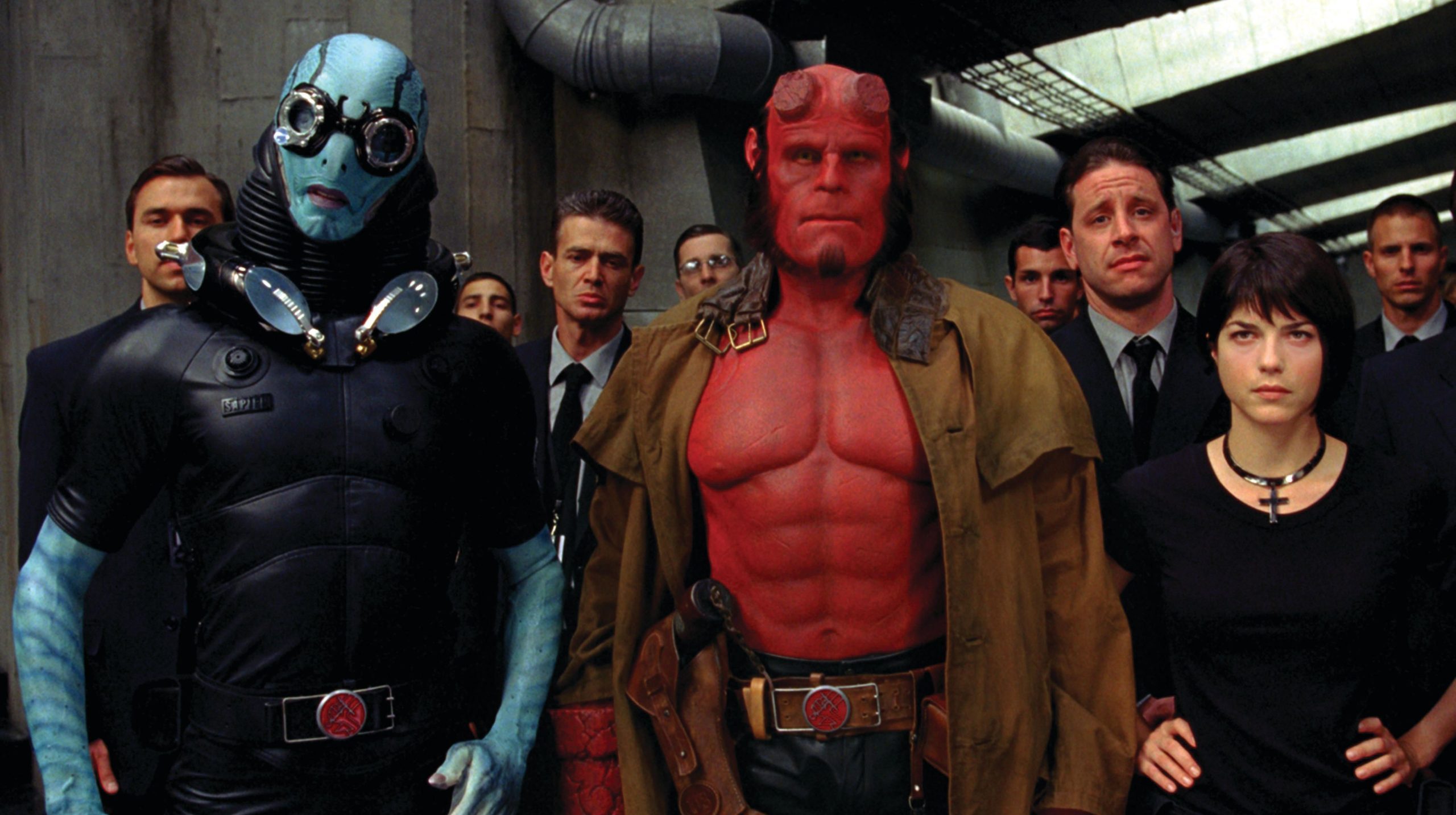
There’s no getting around the fact that Hellboy is dominated by action sequences. Kroenen and Haupstein resurrect Rasputin from the dead and then liberate a demon dog called Samael from confinement in an ancient statue. Samael, a writhing mass of slimy tentacles and sharp teeth, threatens to take over the world via mitosis and features as a recurring foe. The other villains exist more on the periphery of the story until the end, when Hellboy must defeat the Behemoth. What I love about Hellboy is that even though its action is its centerpiece—which in modern films usually equates to a nosedive into an uncanny valley of digitically fussed-over perfection—del Toro achieves great results the old-fashioned way. Featuring complex choreography and excellent pacing and editing, the fight sequences here are delightful and go a long way towards smoothing over the jagged edges of the plot.
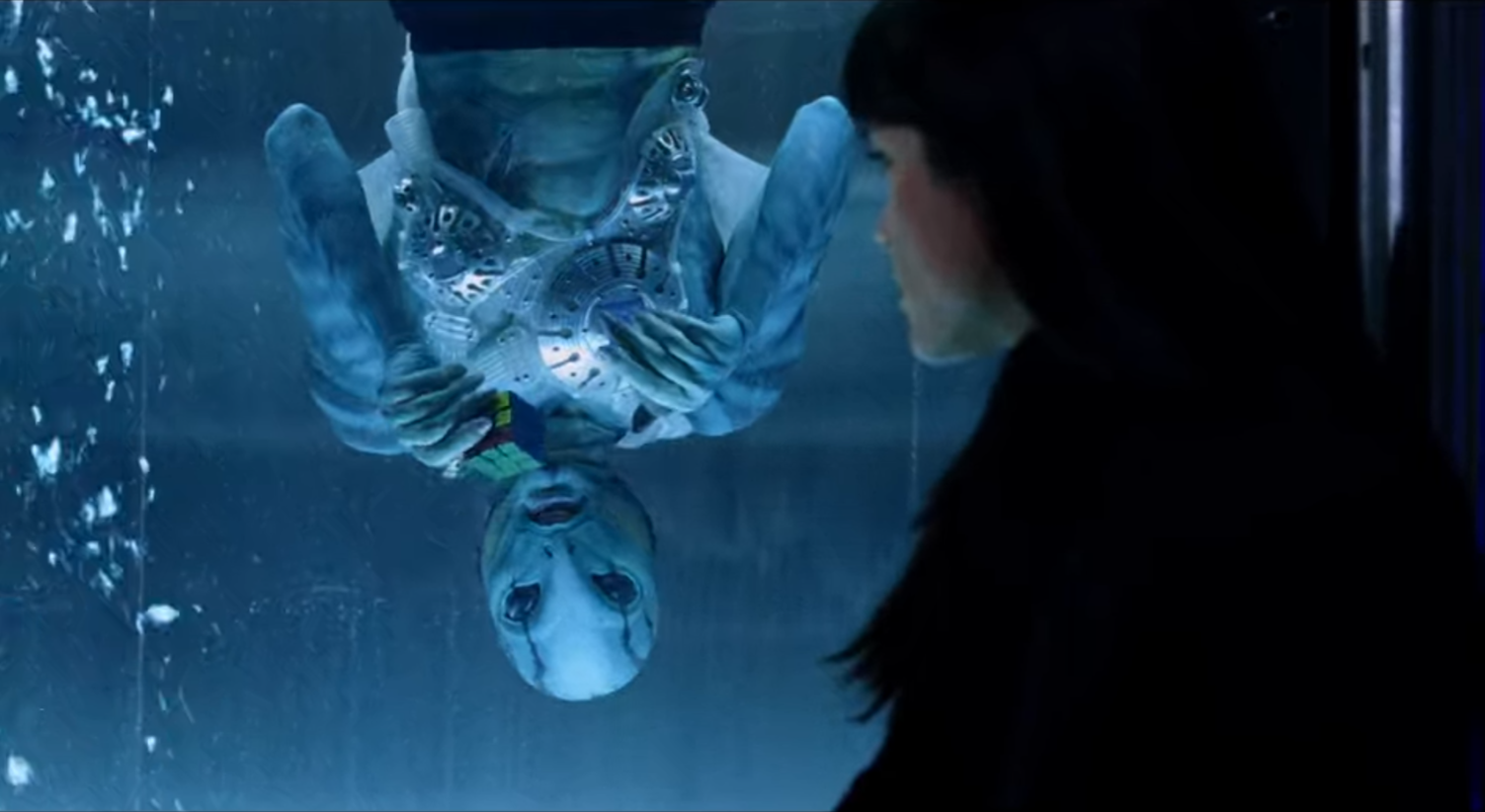
The action sequences have such a solid, tactile feel to them because they were mostly captured in camera and then augmented with CGI. Computer modeling was undoubtedly used but subtly done. Despite the outlandish appearance of the characters, it sounds right to say they look “realistic.” Along with many other prominent filmmakers, del Toro was inspired by the work of pioneering practical effects animator Ray Harryhausen (and even invited the octogenarian to participate in the production). However, despite namedropping Harryhausen as an influence, I don’t think Hellboy has an intentional throwback feel to its animated action. Additional use of wide shots and maybe some stationary cameras would have given it a totally different, old school vibe that’s simply not there. In any case, the energetic depictions are a real treat compared to the other common methods for filming action (which more or less act as substitutes for real energy)—the extensive use of either shaky cam or CGI. There are certainly moments where a stunt in Hellboy would have been impossible with a real person, but there’s a refreshing dearth of scenes that have that pervasive slightly-off gravity problem prevalent in so many high budget superhero films. The set designs are also lush and diverse and showcase del Toro’s penchant for gothic settings.
At ~100 minutes in length, Hellboy never strays from the sweet spot. Its jumble of apocalyptic mythology, campy action and exquisite effects is there and gone before it begins to wear out its welcome, resulting in a pleasant if somewhat forgettable experience.